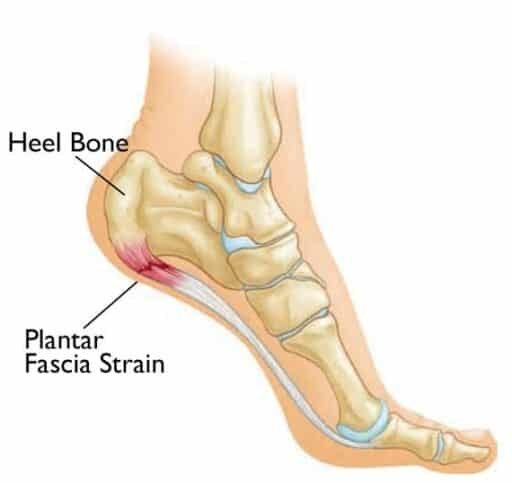
Sleep Apnea
Here are 11 principles to help manage and alleviate sleep apnea by focusing on holistic lifestyle adjustments: 1. Breathing Techniques:…
15/10/2019

Here are 11 principles to help manage and alleviate sleep apnea by focusing on holistic lifestyle adjustments:
1. Breathing Techniques: Incorporate deep, diaphragmatic breathing exercises to improve oxygenation and reduce stress, both of which can help alleviate sleep apnea symptoms. Proper breathing practices can also help calm the nervous system and promote more restful sleep.
2. Postural Alignment: Address postural imbalances to improve breathing mechanics. Poor posture, especially forward head posture, can restrict airways and worsen sleep apnea. Corrective exercises that strengthen the neck, back, and core muscles can be beneficial.
3. Optimize Sleep Position: Choose sleep positions that support the natural alignment of the spine and airways, such as sleeping on your side. Sleeping on your back can cause the tongue and soft tissues to collapse backward, blocking the airway.
4. Diet and Nutrition: Follow an anti-inflammatory diet that supports overall health. Eating whole, unprocessed foods and avoiding sugar, refined carbs, and common allergens can help reduce mucus production and inflammation, which may contribute to airway blockage.
5. Hydration: Maintain adequate hydration, as dehydration can cause the soft tissues in the mouth and throat to become sticky, potentially leading to airway blockages. Drink enough water throughout the day to support overall health and keep airways clear.
6. Reduce Stress: Chronic stress can lead to muscle tension and shallow breathing, exacerbating sleep apnea. Practicing stress-reduction techniques such as meditation, mindfulness, and deep breathing exercises can help manage symptoms.
7. Functional Movement and Exercise: Engage in regular exercise to maintain a healthy weight and strengthen the muscles involved in breathing. Physical activity helps improve lung capacity and overall respiratory function, reducing the severity of sleep apnea.
8. Core Stabilization and Strengthening: Strengthen core muscles, including those involved in breathing, to enhance respiratory function. Exercises that promote core stability and overall body balance can be particularly helpful.
9. Avoid Alcohol and Sedatives: Avoid alcohol and sedative medications, especially before bedtime, as they relax the muscles of the throat and increase the risk of airway collapse during sleep.
10. Sleep Hygiene: Establish a consistent sleep schedule and create a conducive sleep environment, such as keeping the room cool and dark and avoiding electronic screens before bed. These practices support proper melatonin production and better sleep quality.
11. Detoxification and Gut Health: Prioritize gut health by consuming a balanced diet rich in fiber, probiotics, and clean, organic foods. A healthy gut can positively impact overall health, including sleep quality, by reducing the burden on the body.
These principles focus on lifestyle modifications to support better sleep and overall well-being, which can help reduce sleep apnea symptoms.
Jump to navigation Jump to search
| Sleep apnea | |
|---|---|
| Other names | Sleep apnoea, sleep apnea syndrome |
 |
|
| Obstructive sleep apnea | |
| Pronunciation | |
| Specialty | Otorhinolaryngology, sleep medicine |
| Symptoms | Pauses in breathing or periods of shallow breathing during sleep, snoring, tired during the day[1][2] |
| Complications | Heart attack, stroke, diabetes, heart failure, irregular heartbeat, obesity, motor vehicle collisions[1] |
| Usual onset | 55–60 years old[1][3] |
| Causes | Obstructive sleep apnea, central sleep apnea, mixed sleep apnea[1] |
| Risk factors | Overweight, family history, allergies, enlarged tonsils[4] |
| Diagnostic method | Overnight sleep study[5] |
| Treatment | Lifestyle changes, mouthpieces, breathing devices, surgery[1] |
| Frequency | 1–6% (adults), 2% (children)[3][6] |
Sleep apnea, also spelled sleep apnoea, is a sleep disorder where a person has pauses in breathing or periods of shallow breathing during sleep.[1] Each pause can last for a few seconds to a few minutes and they happen many times a night.[1] In the most common form, this follows loud snoring.[2] There may be a choking or snorting sound as breathing resumes.[1] Because the disorder disrupts normal sleep, those affected may experience sleepiness or feel tired during the day.[1] In children it may cause hyperactivity or problems in school.[2]
Sleep apnea may be either obstructive (in which breathing is interrupted by a blockage of air flow), central (in which regular unconscious breath simply stops), or a combination of the two.[1] Obstructive (OSA) is the most common form.[1] Risk factors for OSA include being overweight, a family history of the condition, allergies, a small breathing airway, and enlarged tonsils.[4] Some people with sleep apnea are unaware they have the condition.[1] In many cases it is first observed by a family member.[1] Sleep apnea is often diagnosed with an overnight sleep study.[5] For a diagnosis of sleep apnea, more than five episodes per hour must occur.[7]
Treatment may include lifestyle changes, mouthpieces, breathing devices, and surgery.[1] Lifestyle changes may include avoiding alcohol, losing weight, stopping smoking, and sleeping on one’s side.[8] Breathing devices include the use of a CPAP machine.[8] Without treatment, sleep apnea may increase the risk of heart attack, stroke, diabetes, heart failure, irregular heartbeat, obesity, and motor vehicle collisions.[1]
OSA affects 1 to 6% of adults and 2% of children.[3][6] It affects males about twice as often as females.[3][9] While people at any age can be affected, it occurs most commonly among those 55 to 60 years old.[1][3] CSA affects less than 1% of people.[10] A type of CSA was described in the German myth of Ondine’s curse where the person when asleep would forget to breathe.[11]
Our bella vista, personal trainers take a lifestyle to approach to helping our clients enjoy better health and fitness. With over 25 years of personal training experience in the hills district we are some of the most experienced personal trainers in our industry and have helped numerous people look, feel and function better for sports and life!
We have trained international level athletes and 70 year old nannas and know that a scientific approach to training can be tailored for anyone wanting to improve any aspect of their health and fitness.
We do not promote quick fix strategies or products and encourage our clients to take a holistic – long term approach to achieving their goals. This means looking at exercise, nutrition, motivation and lifestyle change.
Too many people get sucked into the empty promises of “quick fix” products and programs in the fitness industry. We promote good health, fitness and lifestyle and have attained amazing results in doing so.
We are helping people in bella vista, baulkham hills, norwest, caste hill, glenhaven, glenwood, kellyville, kellyville ridge, the ponds, beaumont hills, kings park, schofields, kenthurst, dural, rouse hill, annangrove, galston and even have clients coming form outside the hills district and Sydney to our Lexington Road service.
baulkham hills, Bella vista, castle hill, health, hills district, norwest, personal trainer, personal training, sleep apnea

Plantar fasciitis is one of the most common foot conditions, causing pain and discomfort along the bottom of the foot,…
22/01/2025